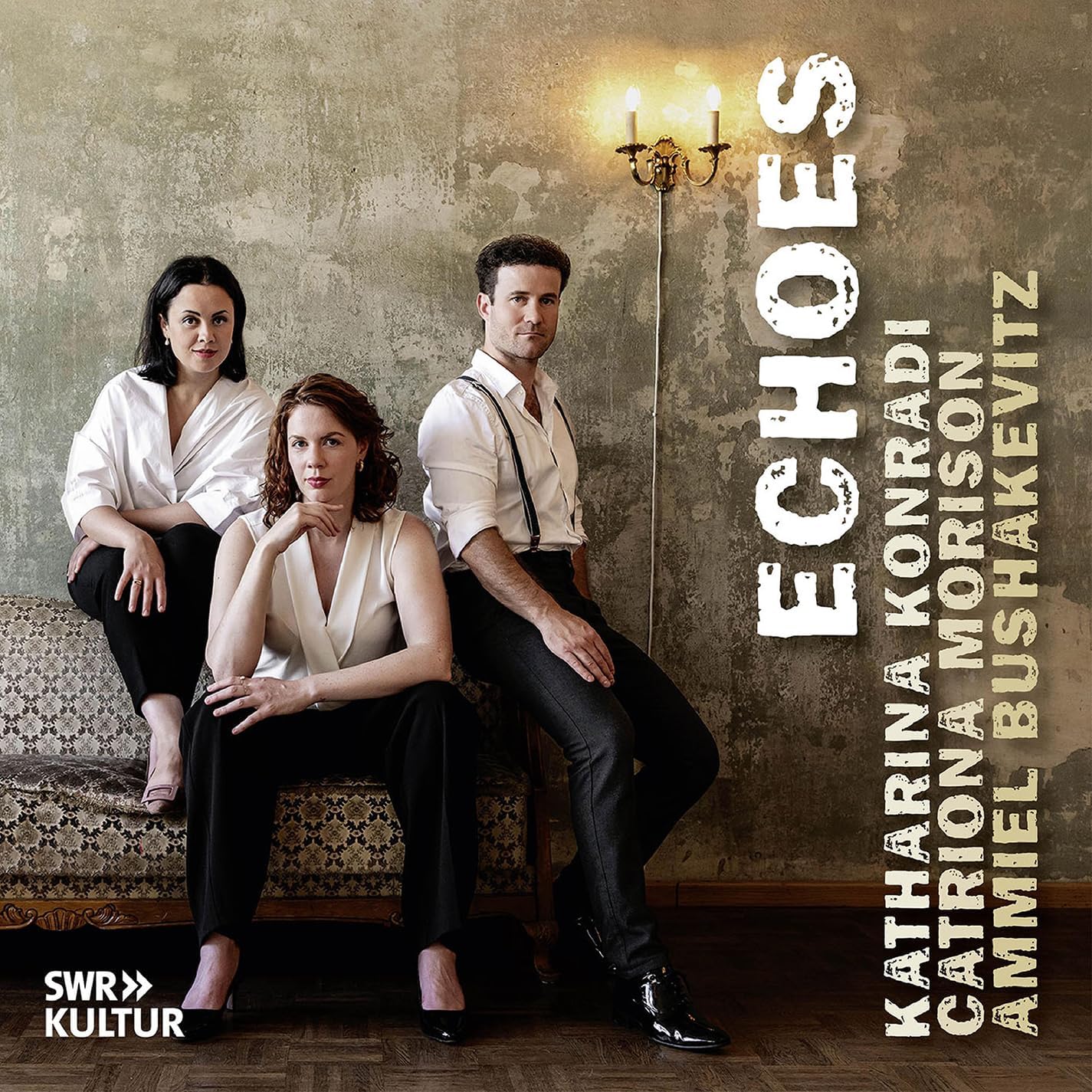 ECHOES: Duets by Schumann Brahms, Saint-Saëns et al Katharina Konradi (soprano), Catriona Morison (mezzo), Ammiel Bushakevitz (piano)(CAvi/SWR/DG)
ECHOES: Duets by Schumann Brahms, Saint-Saëns et al Katharina Konradi (soprano), Catriona Morison (mezzo), Ammiel Bushakevitz (piano)(CAvi/SWR/DG)
For my first taste of this new disc of soprano/mezzo duets, I couldn't resist skipping the first few songs and heading straight for Brahms's “Die Schwestern” Op. 61/1. It is the composer's (and Mörike’s) glorious Demoiselles de Rochefort moment. The two singers express their sheer delight in sisterhood, a feeling which remains completely unalloyed... until a twist comes in the last stanza when they confess that they’ve both fallen in love with the same fella. The song certainly suits the sense of fun and exuberance in musicality that Katharina Konradi and Catriona Morison share, as they trip off together singing, often in thirds. And they prove equally successful in many different moods, for example more tender moments such as the moonlit stillness of “Die Meere” to a poem by Wilhelm Müller, where pianist Ammiel Bushakovitz plays Brahms’s gently bobbing barcarolle with fluency, poetry and ease. Their duetting, both introvert and extrovert, also brings back happy memories of the great pairings in this repertoire from earlier eras, such as Felicity Lott and Ann Murray, or Edith Mathis (later Juliane Banse) and Brigitte Fassbaender.
Konradi, who sings soprano, and is originally from Bishkek in Kyrgyzstan, and Edinburgh-born mezzo Morison, who won Cardiff Singer of the World in 2017, got to know each other on the BBC NGA scheme and clearly get on well. And there is much, much more to be admired and enjoyed throughout their programme of 22 songs (12 in German, and 10 by French composers of which three are sung in Spanish). There are some fascinating and unfamiliar works. A revelation was Pauline Viardot’s “Habanera”from 1880 might look from the short song text in the booklet that it is going to be quick and trifling. It's anything but: the work is an ambitious three-section mini-cantata. Saint-Saens’ “El Desdichado” is a technique work-out which doesn’t just give an excuse for some impeccable trilling, it also has quiet and serene ending with which Konradi and Morison bring a perfect take to an end.
One truly impressive feature of this disc is Morrison’s ability to dovetail with Konradi. She talks about this in the liner note interview: “Our voices are quite different in brightness, weight, colour. However, when we sing together, we listen to each other, and use tools from our technique (vibrato or brightness for example) and musicality to either match each other, or offer a different quality.” She does all that and more. If I need to nit-pick, then I found some of the Schumann at the beginning of the disc a bit cautious and inhibited, and I’d also want to express the wish that all three excellent artists and their producer had gone on a speed awareness course before recording the final track, Fauré’s “Tarantella”. It's so close to what it could have been: just the teensiest tad slower, they could have nailed it completely, and it would have put the ideal final seal on an excellent recital. Sebastian Scotney
- Echoes on Amazon
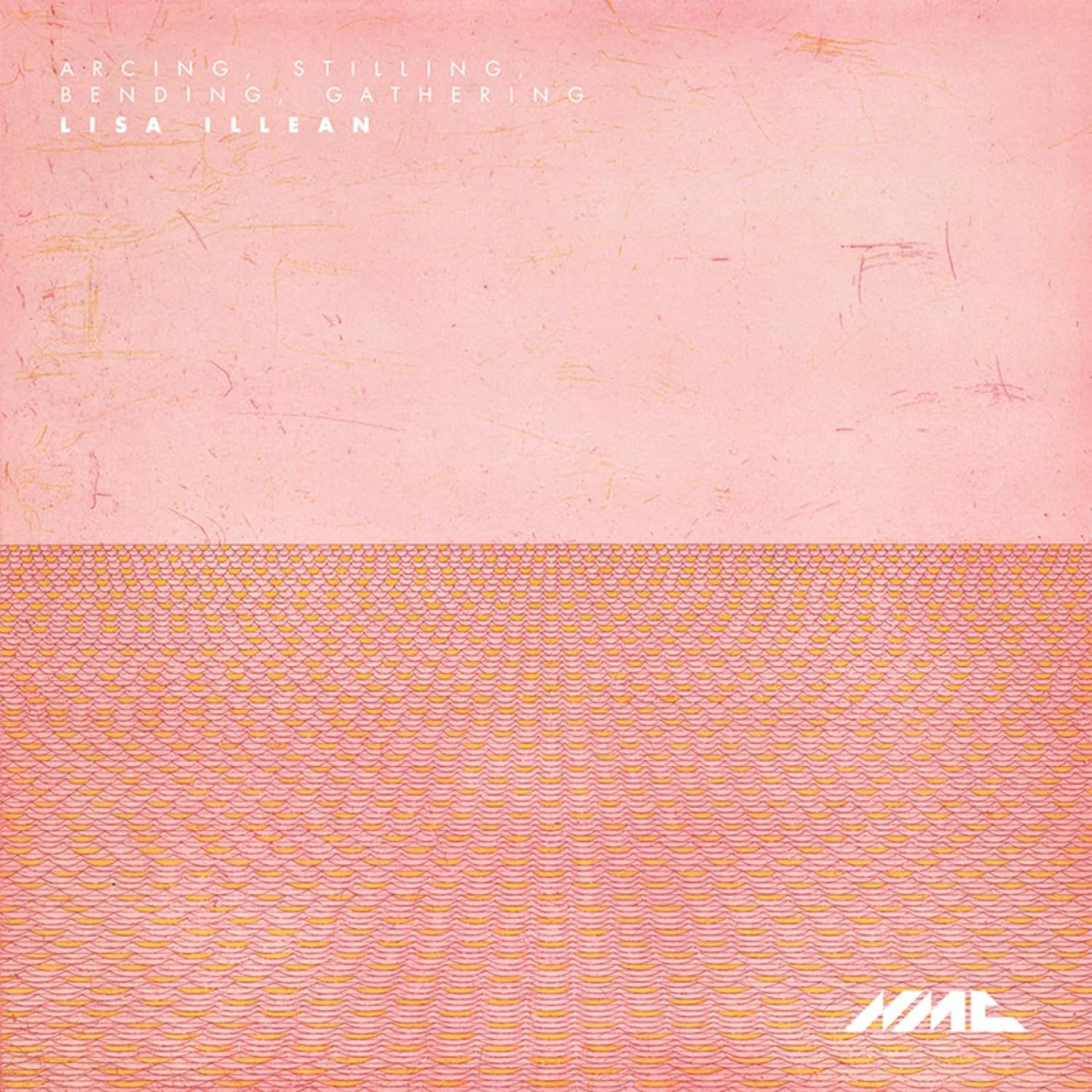 Lisa Illean: arcing, Stilling, Bending, Gathering (NMC)
Lisa Illean: arcing, Stilling, Bending, Gathering (NMC)
Composer Lisa Illean’s publisher introduces her as a composer of acoustic and acousmatic music – the latter term new to me. Wikipedia describes it as “a form of electroacoustic music that is specifically composed for presentation using speakers, as opposed to a live performance”. This disc sounds exquisite, one constant in the four works collected being producer Nicholas Moroz. Recording music this delicate, this refined, takes rare skill, and if you’re not drawn in after a few minutes of Illean’s arcing, stilling, bending, gathering, you’ve no soul. It’s extraordinary stuff, four movements scored for piano, solo violin, electronics and a chamber ensemble split into four separate groups. Inspired by a pencil sketch showing the moon’s phases, the music’s different layers variously, slowly overlap and occlude one another. Repeated listenings throw up a wealth of colour and detail, my favourite being a spellbinding harp entry in the second section. Sonic manipulation plays a more prominent role in Tiding II (silentium), real and virtual sounds shifting in front of one’s ears,percussion and piano duo George Barton and Siwan Rhys sharing space with saxophonist David Zucchi and Michael Acker’s live electronics.
A through-grown earth sets snatches of poetry by Gerard Manley Hopkins for soprano and prerecorded accompaniment, soprano Juliet Fraser’s voice zoning in and out of focus against a hazy instrumental backdrop. After which, Land’s End comes as an intoxicating jolt: this is a work for chamber orchestra inspired by the work of Latvian-American artist Vija Celmins. Illean’s colours are brighter and more clearly defined here, though the voice is recognisably the same. As with the other works, the recording has incredible presence. Dissonant wind chords suggest bird calls, heard against seismic basso rumblings and eerie string chords. It’s all compelling, and already on my provisional ‘best of 2024’ list.
- Lisa Illean on Amazon
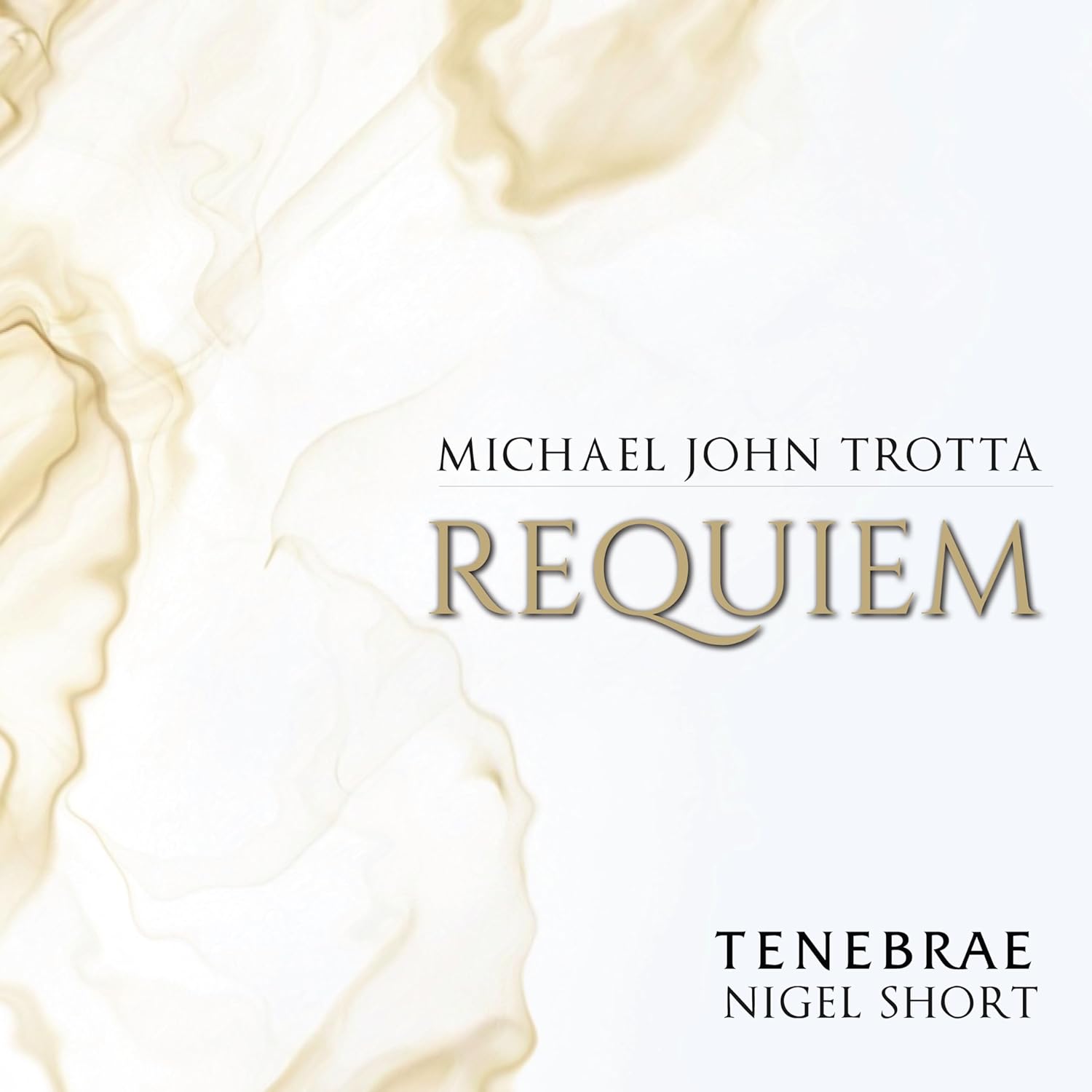 Michael John Trotta: Requiem Tenebrae/Nigel Short
Michael John Trotta: Requiem Tenebrae/Nigel Short
My go-to requiem mass settings tend do be downbeat, dramatic ones, so Michael John Trotta’s small-scale, intimate take on the genre came as a surprise. There are moments when the heavens open (the tutti passages in the “Offertorium” are spine-tingling), but the prevailing tone is consolatory and upbeat, the language unapologetically backward looking. Trotta cites Verdi, Duruflé and Fauré as influences, to which I’d add post-war musical theatre; the vocal harmonies in the opening “Introit” are more Broadway than Brahms. Still, when performed with this level of conviction (Nigel Short’s Tenebrae on predictably good form), Trotta’s Requiem is an enjoyable listen.
It’s the details which linger: the faux-Alberti bass in the introduction to a very compact “Sanctus”, or the squelchy organ harmonies heard before soprano Rosanna Wick’s solo in the “Pie Jesu”, Trotta channelling his inner Bernstein. This “Dies Irae” is actually based on the much-quoted plainchant melody, itself returning in the “Libera Me”, and the soft close of Trotta’s “In Paradisum” is hard to resist.
- Michael Trotta on Amazon
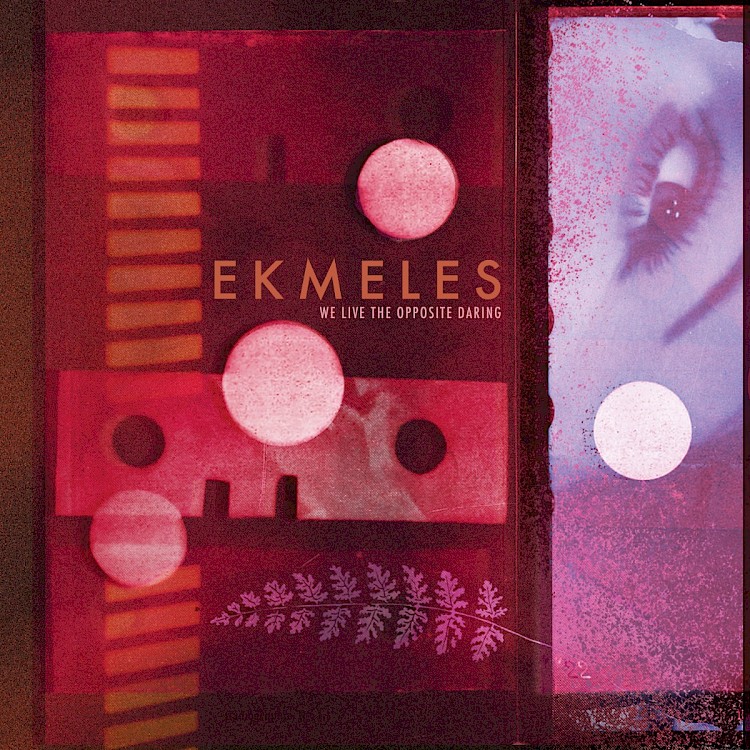 We Live the Opposite Daring Ekmeles (New Focus Recordings)
We Live the Opposite Daring Ekmeles (New Focus Recordings)
I’m not going to mislead you, this one may not be for everyone. It’s not “easy listening” – but it is very rewarding listening, an intense experience that dives deep and is deeply satisfying. Ekmeles (taking their name from an ancient Greek technical musical term for “tones not appropriate for musical usage”) are a New York based group of singers who dedicate themselves to new and neglected older avant-garde music. Very much like the British group EXAUDI, who I have reviewed in this column, Ekmeles are a hyper-virtuosic ensemble who can tackle the most challenging music in a way that doesn’t just get the notes right – although they do that for sure – but also breathes life into it, giving performances that are committed, colourful and highly arresting. This, their second album, has incredible breadth, from Hannah Kendall’s searingly angry and elegiac this is but an oration of loss, about the drowning of 130 enslaved Africans at the hands of British sailors in 1783, to the rocking minimalism of Shawn Jaeger’s love is and Erin Gee’s Mouthpiece sequence, which shares a joy in extended vocal techniques that reminded me of Roomful of Teeth.
There is a direct connection with EXAUDI in the form of the opening work, Primo Libro by James Weeks, EXAUDI’s founder-director. This 17-minute collection of 16 short madrigals (all recorded as one track) uses a 31-division equal temperament tuning, which means that its many chordal consonances are super-consonant, with thirds so pure they could get married in a white dress. In between these gleaming chordal moments, microtonal melodies weave their way through fragile solos and duets. Zosh Di Castri’s We live the opposite daring offers rhythmic impetus, through body percussion and exhilarating fast syllabic nonsense. Jeffrey Gavett is the artistic director of Ekmeles and his Waves is a vocal realisation of a piece originally written for an instrument in the Metropolitan Museum of Art. The wordless music has long notes coming in and out of tune with each other and it is like listening to a Mark Rothko colour study. The singers make an impassioned case for the music they are singing: they really believe in it, and they made me believe too. It’s not one to put on in the background, but it deserves – and will repay – concentrated listening. Bernard Hughes
- Ekmeles on Amazon
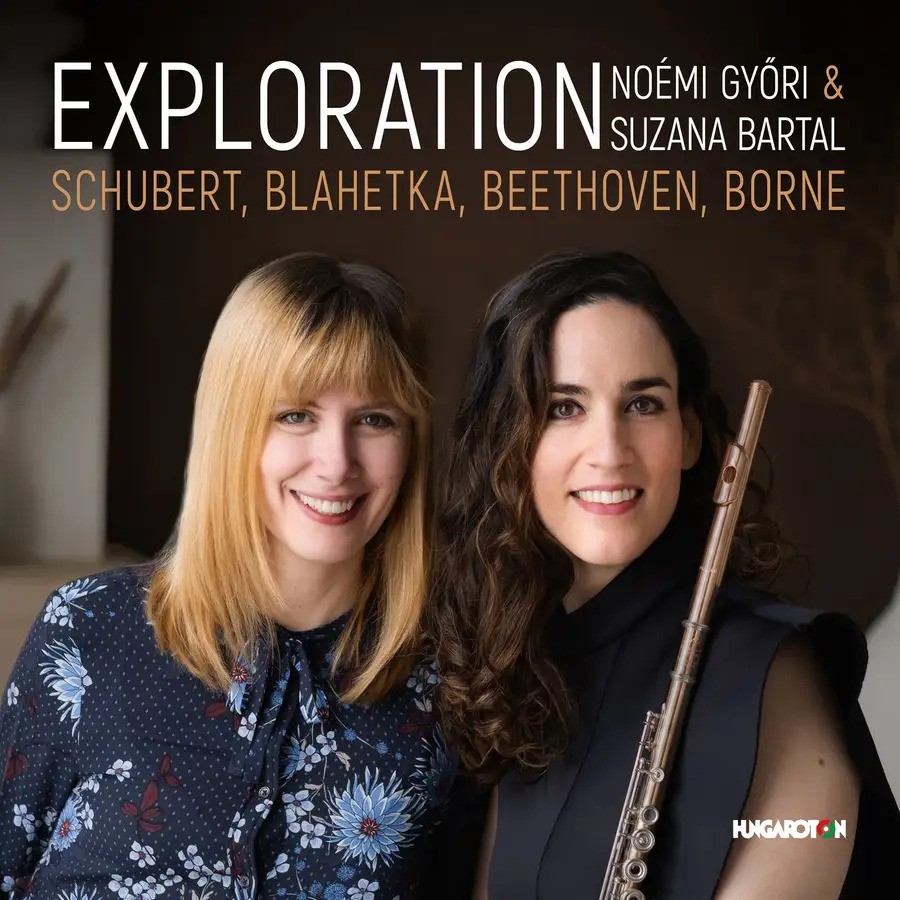 Exploration – music by Schubert, Blahetka, Beethoven and Borne Noémi Győri (flute), Suzana Bartal (piano) (Hungaroton)
Exploration – music by Schubert, Blahetka, Beethoven and Borne Noémi Győri (flute), Suzana Bartal (piano) (Hungaroton)
Flautist Noémi Győri describes her new album as a celebration of playfulness. You wouldn’t guess that from the sombre opening paragraph of Schubert’s Introduction and Variations on “Trockne Blumen”, a straight transcription of a song from Die schöne Müllerin. Seven variations follow, the mood lifting as the technical challenges increase. Lasting 22 minutes, this is a huge work. Győri’s pyrotechnics are impressive in the faster variations, and pianist Suzana Bartal copes brilliantly with some outlandish technical challenges: try the extrovert fourth variation with its flamboyant right-hand flourishes. Austrian composer Leopoldine Blahetka (1809-1885) was a new name to me, born to a musical mother and a father who knew Beethoven. Schubert’s emotional and melodic range is missing, and it’s Győri’s attention to colour and phrasing that makes the piece come to life. Blahetka’s ending is arresting, lulling us into sleep before a tiny, flamboyant coda.
Beethoven’s Op. 41 Serenade began life as a popular (and profitable) early work for flute, violin and viola, later arranged for flute and piano by Franz Xaver Kleinheinz. It’s a frothy showpiece in six short movements, the musical language looking both backwards and forwards: sample the second movement, caught between minuet and scherzo. Győri and Bartal are alert to the multifarious moods, Beethoven’s little “Allegro scherzando e vivace” the epitome of playfulness. As a closer, there’s the Fantaisie brillante on Bizet’s Carmen by the 19th century French flautist François Borne. That so many of the opera’s themes are squeezed into 12 minutes is near-miraculous, as is Győri and Bartal’s ability to convince us that we’re listening to vocal and orchestral forces instead of just two players. A hugely entertaining anthology, superbly recorded if sketchily annotated. Győri will be in action next Friday in Cardiff, giving the UK premiere of a new flute concerto written for her by Christian Mason with the BBC National Orchestra of Wales under Gergely Madaras.
- Noemi Gyori on Amazon
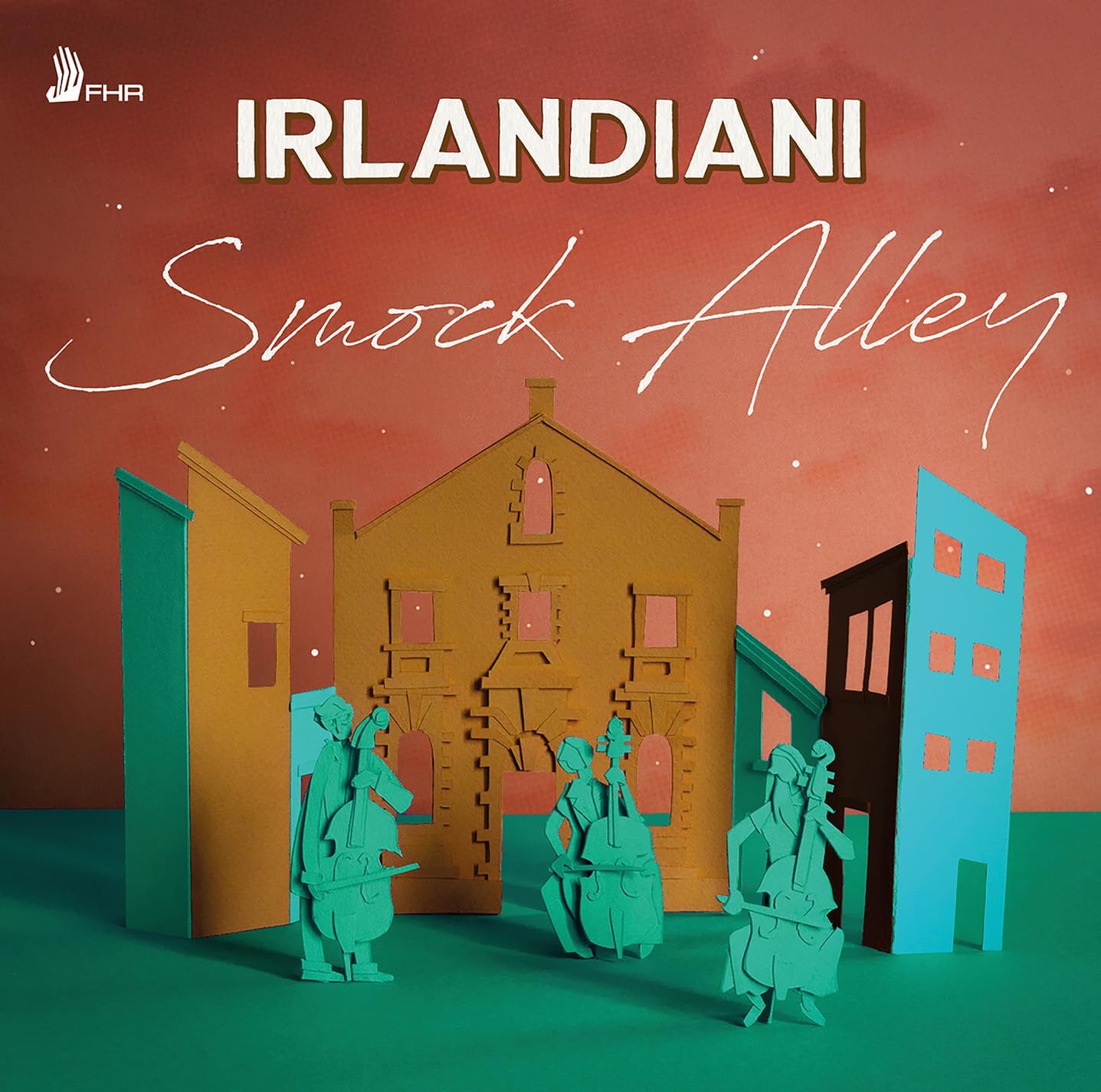 Irlandiani: Smock Alley (First Hand Records)
Irlandiani: Smock Alley (First Hand Records)
Smock Alley takes inspiration – and its name – from the busy theatre district in Dublin in the 18th century, in particular the cross-fertilisation between Italian and native Irish musicians. The heart of the album are two sets of duos for two cellos by Tommaso Giordani, a Dublin resident for two periods in his life, played by Carina Drury and Poppy Walshaw. Their sound is well matched and the intimate sound of the baroque cello suits this domestic style of music, accessible both technically and aesthetically, and great examples of “useful” music. Separating these two sets are a pair of Scarlatti sonatas, which were published in Dublin at this time. Nathaniel Mander has energy in abundance, also allowing the spontaneous inventiveness of the music to come through, and the intricacies of the so-called “Cat’s Fugue” sonata are crystal clear. Geminiani’s Cello Sonata is by turns reflective and rhythmic, the playing spry and direct.
So much for the Italians: what about the Irish? There are six tracks representing the locals, in which the instrumentation is expanded to include Irish flute and violone (essentially a double bass). The traditional tunes, all more or less connected with the Italian musicians, are freely arranged by Irlandiani, and are texturally a long way distant from the polite galanterie of the sonatas and duos. Francis Ireland’s To Sleep, with the inclusion of the violone, gives it a delightfully bass-heavy sound. Molly St George is moving and nostalgic and The Rakes of Westmeath bright and breezy. But I feel these cross-fertilisations and contrasts would have been more apparent with some mixing of the Irish and Italian pieces – maybe the shuffle function is a good option here. Bernard Hughes
- Irlandiani on Amazon
- More classical reviews on theartsdesk

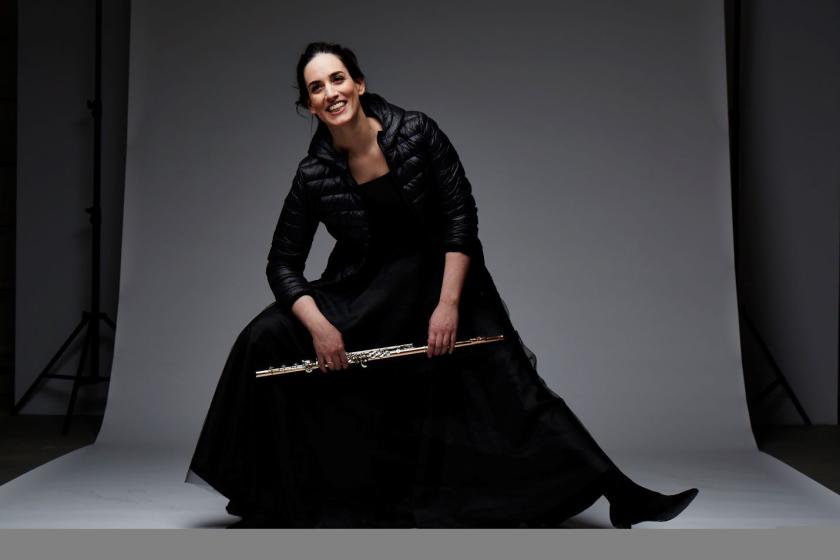













Add comment